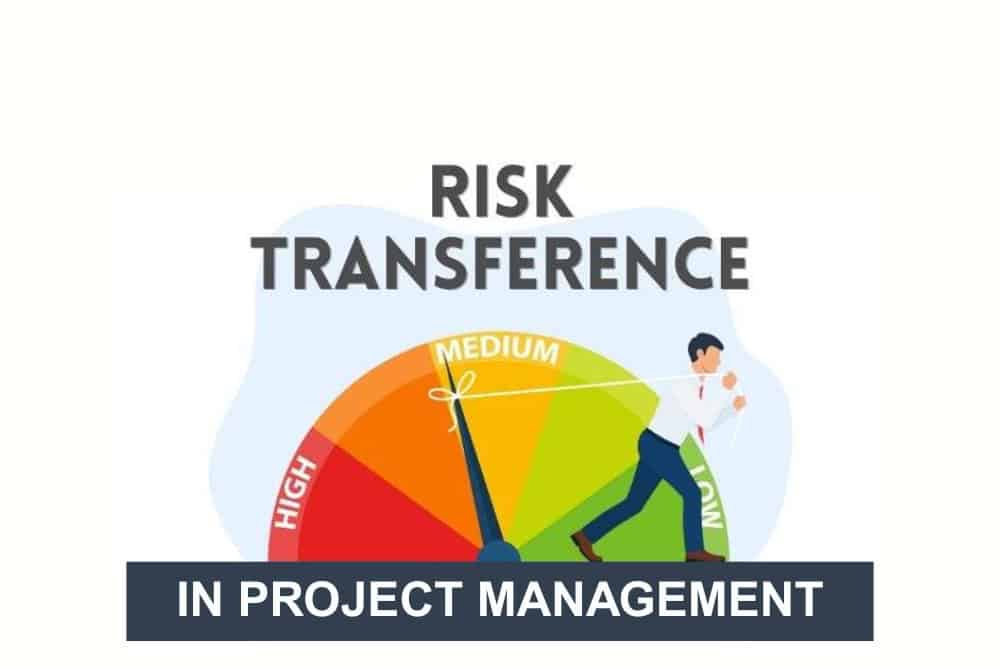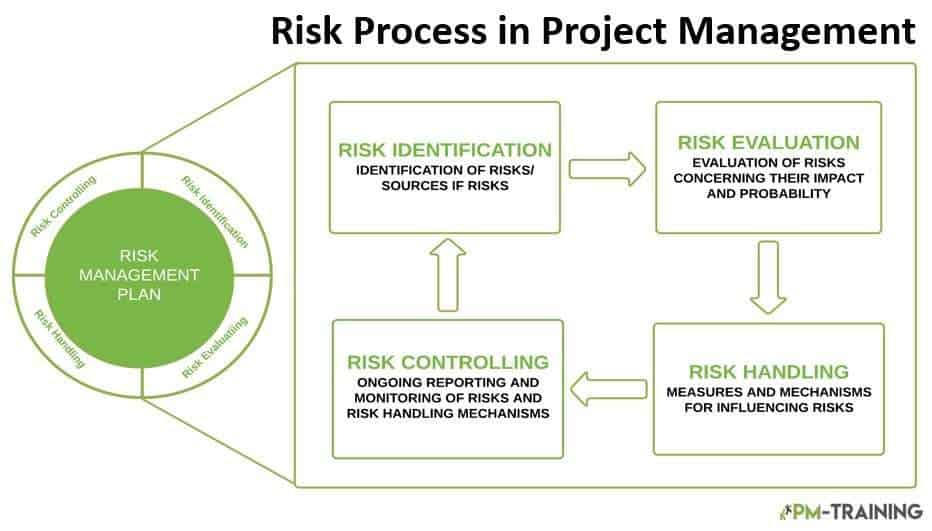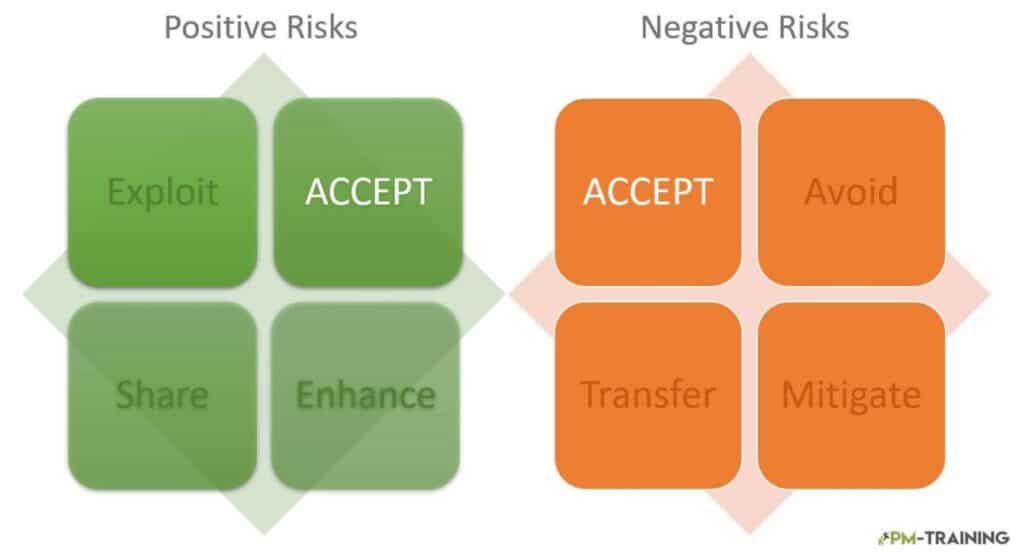
Risk transference is a strategic risk management approach employed by companies, businesses, and organizations to shift anticipated risks—including potential losses, injuries, or damages—to qualified third parties. Under this arrangement, the third party assumes responsibility for the organization’s specified liabilities. This risk management strategy enables organizations to focus on their core business objectives while mitigating exposure to identified risks, though it involves associated costs (PMBOK®, 6th edition, ch. 11.2.3.2).
How Risk Transference Works
Risk transference represents a contractual arrangement whereby an organization formally transfers identified risks to a qualified third party through legally binding agreements. This strategic process involves the risk-bearing entity engaging with specialized providers to establish comprehensive coverage through either contractual indemnification or insurance policies, creating a structured framework for risk mitigation and liability management.

The company taking up the insurance policy is then mandated to make periodic payments in the form of premiums to honor the responsibility being undertaken by the third party. The third party, which must have the capacity and ability to insure and or control the risk, then assumes the obligation to cover the potential liability. While there is a possibility that this risk may not take place, the insured company has the benefit of concentrating on its core business mandate.
Risk Transference Example
Insurance represents the most prevalent and effective form of risk transference, wherein individuals or organizations secure coverage for their assets through premium payments. Consider the following illustrative example: Mr. Luke Brown has secured comprehensive vehicle insurance coverage valued at $5,000, specifically designed to protect against physical damage to his automobile.
Under the terms of this policy, he is obligated to remit agreed-upon premium payments over a one-year period. Should Mr. Brown’s vehicle sustain physical damage requiring $1,000 in repairs, he would be entitled to file a claim with his insurance provider for reimbursement of the full repair amount.

Benefits of Transferring Risk
Risk transference carries a lot of benefits, especially for the company or individual seeking to transfer the risk. Some of the benefits include the following:
- It safeguards and protects the company’s assets from any threats that may be unforeseen.
- It shields the company from any financial losses associated with the risk to the extent of the policy agreement.
- By making periodic payments in small amounts, the company is saved from more significant financial burdens.
- The terms and nature of the agreement are not subject to the changing market conditions.
Disadvantages of Transferring Risk
- The risk transfer comes as an additional expense to the asset owner
- The risk coverage is most times limited
- The company covering the risk should always be solvent
Types of Risk Responses for Threats
When handling any project, it is crucial to understand that several risks are involved, whether expected or not. In order to safeguard and prepare your projects for success, you need to plan for the risks and threats and determine how to handle them if and when they occur.

Risk response is defined as the systematic process undertaken by an organization to effectively control and manage risks identified within its projects (PMBOK®, 6th edition, ch. 11.5.2.7). To ensure successful risk management, it is essential to identify, quantify, and prioritize risks based on their severity and probability of occurrence.
You can use the formula: Risk = Risk Probability * Severity.
Once you have quantified and prioritized the risks, here are risk responses you can implement to manage your project risks.
Risk Avoidance
Risk avoidance is one of the most effective strategies for individuals or organizations seeking to eliminate risks associated with project management. However, it is not always feasible, as it necessitates the removal of specific project tasks that are linked to the identified threat. While some risks can be entirely eliminated, others may incur significant costs, particularly if they require alterations to the project’s scope, timeline, resources, or personnel. Therefore, it is crucial to conduct a thorough cost-benefit analysis for any risks you plan to mitigate.
This risk response strategy is primarily employed when the potential consequences of a risk are significantly detrimental and exceed the project’s acceptable thresholds. In extreme cases, risk avoidance may even necessitate the cancellation of the entire project if the risk is deemed unacceptable.
Example of Risk Avoidance vs. Transfer
In risk avoidance, an extreme sports enthusiast recognizes the inherent risk of injury and chooses to cease participation in the sport altogether. Conversely, in risk transfer, the individual opts not to abandon the sport but instead secures insurance coverage to protect against potential injuries, thereby transferring the associated risk to a third-party company.
Risk Mitigation
Risk mitigation involves reducing the impact of risks that you cannot eliminate. There are effective steps that one can implement to mitigate risks. The first is to reduce the probability of the risk occurring by developing strategies to prevent the threat. The second way to minimize the risk is to reduce the severity of the risk, especially on the project success factors when they occur. (PMBOK®, 6th edition, ch. 11.5.2.5).
Some of the few methods you can consider include conducting additional tests, reducing process and operation complexities, and conducting personnel training. Another option project managers can implement is to transfer those project activities that carry high risks to highly qualified individuals.

Risk Acceptance
When an organization accepts the risks involved in a project it is handling, it seeks collaboration with other entities to share or distribute the activities that are considered to be risky. The advantage of this risk response is that the organization can share those segments of the project it has no expertise to handle with a company experienced in the project task.
An organization can also choose this risk response by taking no action. When the probability of the risk happening is considered very low or its impact is inconsequential, the organization may choose not to transfer, reduce, or avoid the risk. It is, however, interesting to note that, except for risk avoidance, all the other risk responses, including risk transfer and risk mitigation, embrace risk acceptance.
Example of Risk Acceptance vs. Transfer
An example of Risk acceptance vs. Transfer is best explained by a company that faces a risk of an estimated $20,000, yet the total cost of implementing any other risk response is above $40,000. The company, therefore, chooses to accept the risk rather than mitigate it since it is much cheaper. Risk transfer in this scenario would entail bringing in a third party to cover the cost of the risk when it happens, and the company paying premiums for the cover.
After planning risk responses, you will have residual risks, as well as those that have been deliberately accepted
Risk Escalation
This risk response strategy is most suitable when the sponsors and members of the project team agree that the risk presented is beyond the project scope. In this case, the project manager will escalate the matter to the project owner regarding the opportunity. (PMBOK®, 6th edition, ch. 11.5.2.5).
Example of Risk Escalation vs Transfer
An example of risk escalation is a case where a junior staff member identifies an opportunity to introduce a new product into the company’s production. The opportunity is escalated to the senior management to decide. In risk transfer, the company would enter into a contractual agreement with another company to implement the idea on behalf of the organization.
Risk Transfer
Risk transfer is a type of risk response whereby the project owner shifts the risk to a third party. It entails the payment of some amount to the third party to offer a cover for the risk. It does not eliminate or reduce the probability of occurrence but only transfers responsibility. There are several ways in which risk transfer is implemented in organizations. These include insurance whereby the company purchases a cover for the risk and pays monthly premiums as a financial obligation to the third party.
Another way to implement risk transfer is through contractual agreements using the indemnification clauses. The main aim of risk transfer as a way to respond to risk is to reduce the extent of loss in case the threat becomes a reality or restore the company to its initial position before the risk occurred.
Positive Risk Response for Opportunities
Exploitation of Opportunity
There are instances where the project risk may bear positive results even though this may not be within the agreed thresholds. In such scenarios, the organization may choose risk exploitation as its preferred method of risk response. It will therefore have to effect strategies to take hold of the beneficial effects of uncertainty.
Risk exploitation may also entail modifying some of the project thresholds to gain the advantages presented by the overall project risks. Taking this direction would mean putting everything into place to increase the probability of the risk. However, it is important to carefully consider the overall outcome of exploiting the risk presented by a portion of the project tasks against the larger expectation.

Risk Sharing vs Transfer
The distinction between risk transfer and risk-sharing lies in their fundamental approaches to managing project risk. Risk transfer involves shifting the responsibility of project risk to a third party through mechanisms such as insurance or contractual agreements. In contrast, risk-sharing entails collaboration among two or more individuals or organizations to divide and manage the common risk collectively. Risk-sharing is often particularly effective in scenarios that present opportunities.
Transferring Risks FAQ
What is security risk transference?
In the context of physical projects, risk transference could involve hiring security personnel to safeguard the project site. For IT projects, this may entail engaging a cybersecurity firm to protect the project’s IT infrastructure from potential hacking threats, which could adversely affect the project’s success.
What is transference risk response?
Risk transfer is a strategic risk response mechanism in which the project owner shifts the responsibility for specific risks to a qualified third party. This process typically involves the payment of a fee to the third party, who agrees to provide coverage for the identified risks. It is important to note that risk transfer does not eliminate or reduce the likelihood of the risk occurring; rather, it reallocates the responsibility associated with that risk.
What are the two forms of risk transfer?
The two primary forms of risk transference are: first, the transfer of responsibility for the activity to another party; and second, the retention of the activity while transferring the financial risk through insurance.
What is a transference strategy?
One of the most prevalent strategies for risk transference in project management is the acquisition of insurance to safeguard against unforeseen financial threats to the project.
Conclusion on Transferring Risk
Risk transference is a widely adopted risk response strategy among large corporations. While individual companies may implement various strategies based on the specific nature or value of the risks they face, there is no universal solution that fits all scenarios. Continuous risk monitoring is essential to identify and understand the most effective risk response strategy tailored to each organization’s unique situation.
Suggested articles:
- 8 Ways to Improve Risk Management at Work
- PMs Understanding Risk Exposure in Risk Management
- Risk Control In Project Management
Shane Drumm, holding certifications in PMP®, PMI-ACP®, CSM, and LPM, is the author behind numerous articles featured here. Hailing from County Cork, Ireland, his expertise lies in implementing Agile methodologies with geographically dispersed teams for software development projects. In his leisure, he dedicates time to web development and Ironman triathlon training. Find out more about Shane on shanedrumm.com and please reach out and connect with Shane on LinkedIn.